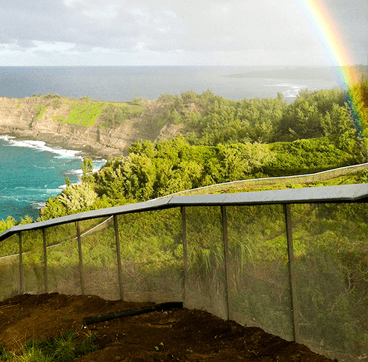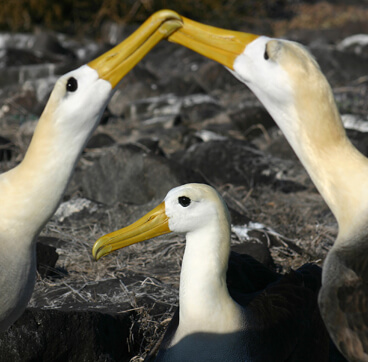Seabirds are exquisitely adapted to life on the ocean. Like the far-ranging Laysan Albatross and Black-capped Petrel, most seabirds spend a large part of their lives over the open water, far from human habitation. As a group, seabirds are among the world's most endangered birds. For example, 15 of 22 species of albatross are threatened with extinction.
These remarkable birds deserve our every effort to conserve them. Many seabirds, like Waved Albatross, mate for life and can live for 60 years or more. Sadly, few reach such old age.
ABC's Seabird Program protects and restores seabird populations across the Americas by addressing their most significant threats — from fisheries bycatch and invasive species to climate change — through innovation, partnerships, conservation planning, and direct action.

Our main strategy is to protect rare birds at sites where they currently breed. We protect and restore habitat and remove invasive predators; when necessary, we work to establish new protected breeding sites. For example, ABC and partners have built a predator-proof fence around seven acres within Kilauea Point National Wildlife Refuge in Hawai‘i. More than 100 Hawaiian Petrel and Newell’s Shearwater have been moved there to establish a new colony. (Photo: Jessica Behnke) Read more.

Storm-petrels are among the smallest and least known of seabirds. ABC has made conservation gains for Markham’s and Ringed Storm-Petrel by partnering with Chilean biologists to find and protect nesting sites, as well as to reduce threats to the birds. Lights are a particular hazard, as they disorient the night-flying birds traveling from inland breeding grounds to ocean foraging areas. We are working to reduce the impacts of night lighting and to establish national policies to protect all wildlife from unnecessary lights. (Photo: Pete Morris) Read more.

ABC has helped to develop techniques that reduce fisheries’ impacts to Waved Albatross and other birds; for example, by limiting the amount of time fishing lines are exposed in the water, where they attract and hook seabirds. This simple technique is now being used in the small boat artisanal hake fisheries in Ecuador. (Photo: Matt Tilghman) Read more.

For Critically Endangered species such as the Black-capped Petrel, strategic conservation plans and resulting actions are essential. ABC has been a key partner in protecting nesting sites for the species in Haiti and the Dominican Republic. Our 2019 tracking study provided new insight into the movements of Black-capped Petrels. (Photo: Tazio Taveres) Read more.